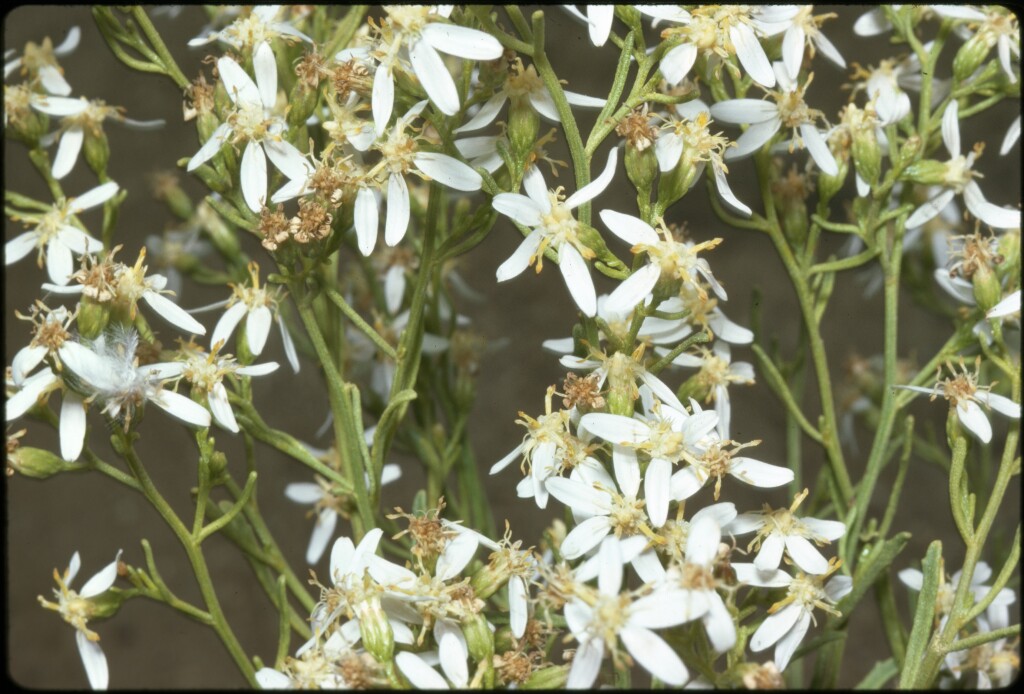Olearia decurrens
(DC.) Benth.Resinous, glabrous, twiggy shrub to c. 1.8 m high; branchlets angled. Leaves alternate, sessile or subsessile, narrowly obovate to linear, 7–30(–45) mm long, 1–5 mm wide, entire, few-toothed or somewhat lobed toward apex; margins flat to recurved; midribs continuous with angles of branchlets. Capitula terminal in small corymbs or panicles, 15–22 mm diam.; involucre conical, 4–6 mm long; bracts 3–5-seriate, graduating, resinous, fringed at apex. Ray florets 3–7, white, ligules 4–9 mm long; disc florets 6–8, yellow. Cypsela cylindric to narrowly obconical, 4–6-ribbed, c. 2 mm long, densely sericeous; pappus 3–4.5 mm long. Flowers mostly Dec.–Apr.
LoM, MuM, Wim, VVP, VRiv, Gold. Also SA, NSW. In Victoria scattered through mallee scrubs of the north-west, and whipstick mallee and box-ironbark forests of the central north, with a small disjunct population in broken, rocky country near Diggers Rest.
Walsh, N.G.; Lander, N.S. (1999). Olearia. In: Walsh, N.G.; Entwisle, T.J., Flora of Victoria Vol. 4, Cornaceae to Asteraceae, pp. 886–912. Inkata Press, Melbourne.
 Spinning
Spinning


